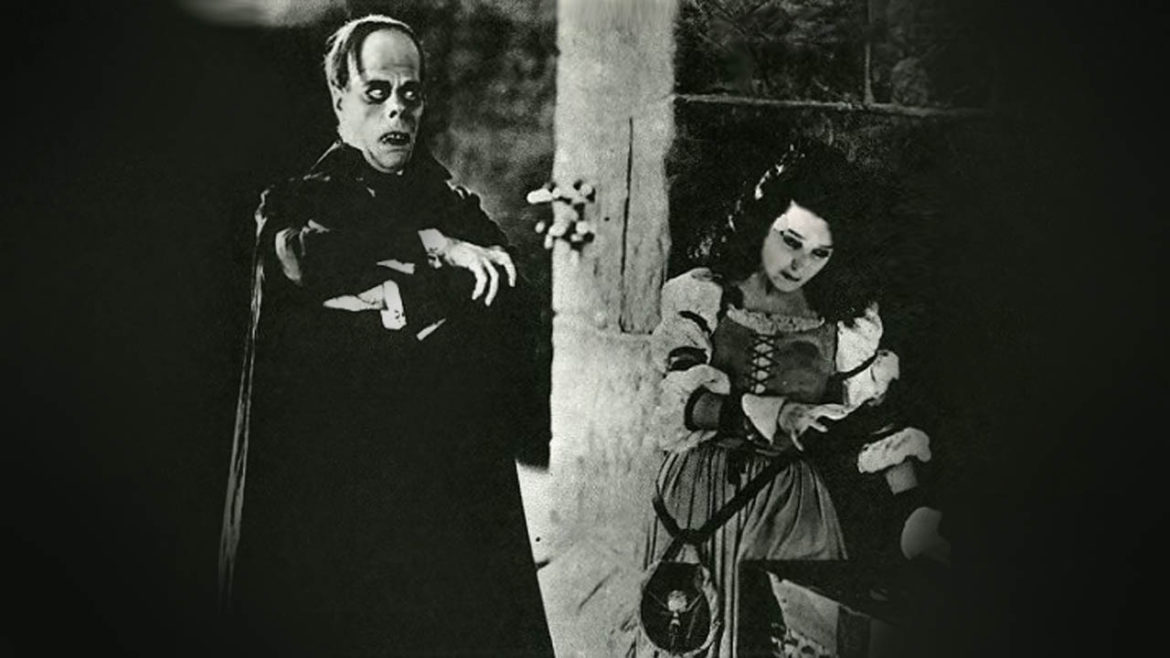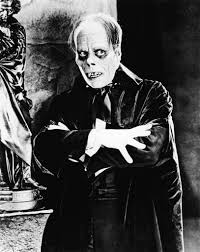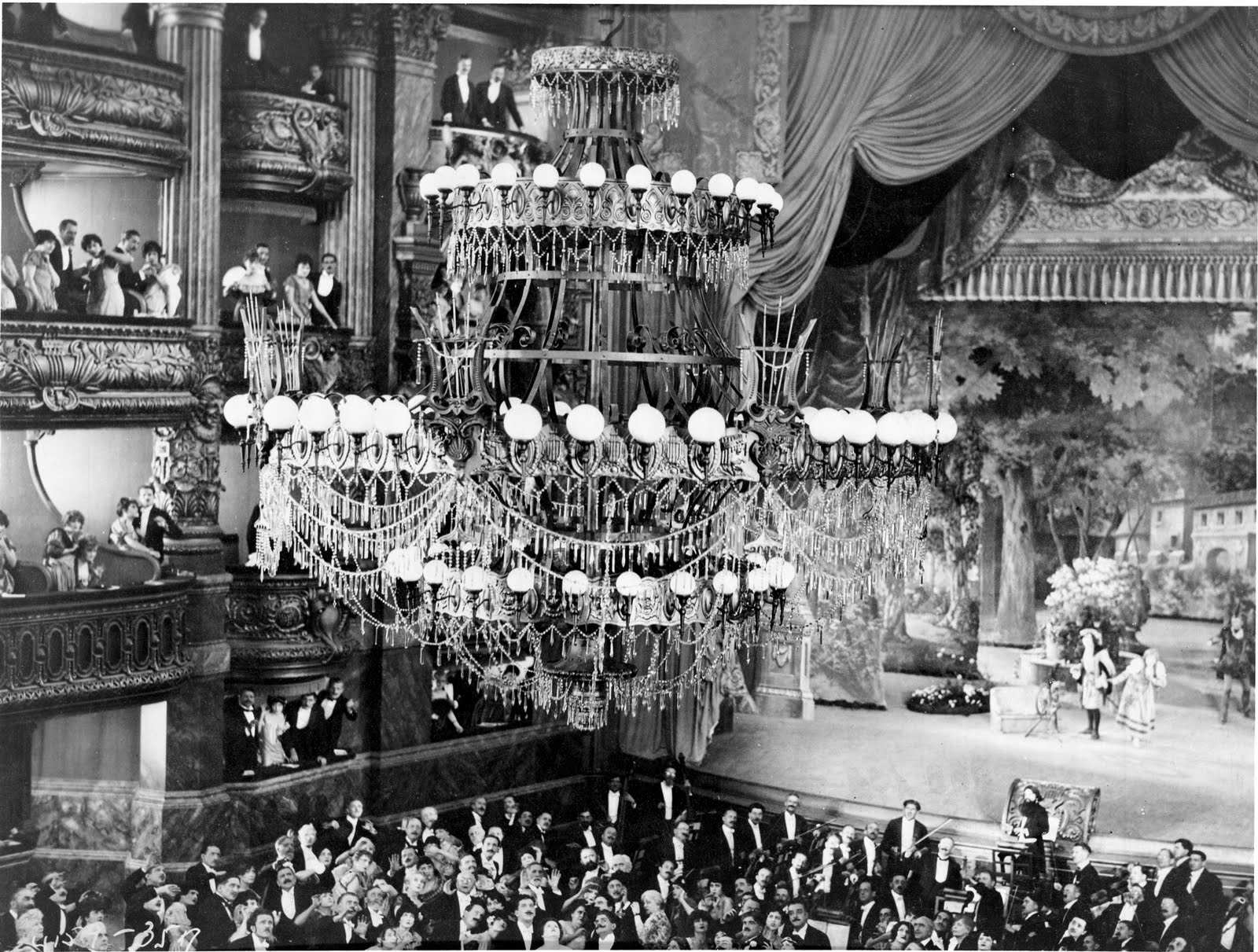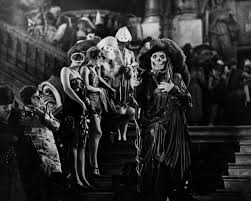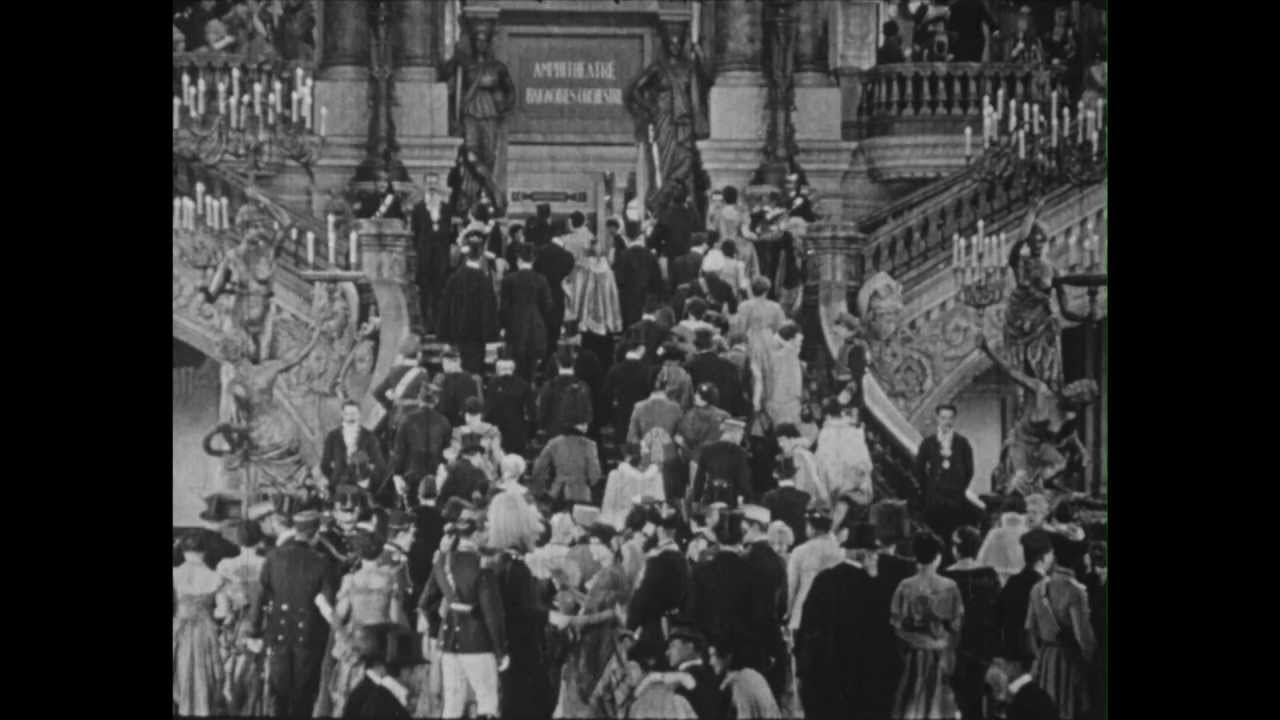As Broadway’s longest running musical, “The Phantom of the Opera” tells a story of unrequited, impossible love and longing, set to soaring music and adored by legions of Andrew Lloyd Webber fans. What a surprise it is to discover, then, that its 1925 film incarnation, like the Gaston Leroux novel on which it is based, is a lot more like Saw.
This Phantom, as embodied by Lon Chaney, Sr. (who famously created his own makeup for the part, as he did a year prior in The Hunchback of Notre Dame), is a monster. Deformed from birth, he was exiled to Devil’s Island for criminal insanity but escaped, and now haunts the catacombs below the Paris Opera House, terrorizing its guests and working his malevolent will on its performers. This is not a misunderstood lover and anti-hero: this is the kind of guy who rigs chandeliers to fall on audiences, traps people in ovens, and tries to drown them alive. “Music of the night,” indeed.
Rupert Julian’s silent version of the story had a tortured history coming to the screen, befitting its title character. Going through multiple cuts due to poor critical and audience response, and even Julian’s removal from the project, The Phantom of the Opera is a work of many hands. At certain moments, it shows. But it’s also a testament to the singular genius of the silent film industry, which created masterpieces out of disparate parts.
We open on the Paris Opera House, in a wide shot that emphasizes the mammoth set design. (Soundstage 28 at Universal Studios would last until 2014, hosting many films in its long run.) Dancers frolic, but a title card warns us that the entire edifice, while “a sanctuary of song lovers,” is also built over “medieval torture chambers and dungeons, long forgotten.” This Gothic note – a return of the repressed underpinning ephemeral beauty – sets the stage.
Almost immediately, there are shadows on the walls, black cats crossing paths, winding staircases, trapdoors. The Opera House has recently changed management, with the old proprietors ominously warning of a presence in Box #5.
Carlotta the Diva is being upstaged by protégé Christine, and none too pleased. Christine has the backing of a mysterious fan, who sends threatening notes demanding she take center stage. When one night, in a performance of Faust, the new owners send Carlotta on instead, a chandelier crashes into the crowd, killing dozens it would seem. Christine, who has been talking to a voice behind the walls, vanishes, from the characters but not from us. We follow her, prisoners of the Phantom, into the subterranean world in which he lives, complete with a “black river” that runs below the stage.
It’s a fascinating metaphor the film taps into: the “Phantom” doubles as art itself. This is made especially clear when Christine refuses her beau Raoul on the grounds that she can’t have both him and her work – the Phantom repeatedly refers to himself as her Master, a point literalized by her actual subjugation. The iconic mask from the Broadway t-shirt is pulled to reveal a truly hideous skeletal presence – art and life are contrasted, and the presence of death is everywhere.
Eventually, life triumphs, but not before the Phantom attempts to burn Raoul and another would-be rescuer alive, and then drown them for good measure, while he keeps his muse prisoner in a torture chamber. Townsfolk, with requisite pitchforks and flames, throw the monster into the Seine.
This is pretty dark stuff all around. The director(s) add light touches: a comic drop through a trapdoor, ballerinas who flit and spin even offstage when hearing of the horrors. But there is nothing light about the film as a whole: it’s a deep dive into a peculiar kind of fear, that what we love may take physical form, and consume us. That we may be shut out from what animates our passions, like the Phantom himself in the cellar, and that those passions may turn hideous.
There is over-acting (I am looking at you, Raoul) and clumsy intertitles, but, generally speaking, it works. The shadows recall Nosferatu, as do the slow-turning doorknobs and creaks we can’t hear but imagine. The enormity of the stage owes a bit to Cabiria, especially a gaping mouth through which dancers emerge and depart. A long shot of an artfully constructed stairway seen through slats is akin to German Expressionism. This Phantom of the Opera feels like it threw every nightmare detail it could think of at the wall, to see what we’d remember when we tried to fall asleep later that night.
It’s terrifying and uncanny, despite some pacing problems and edits that show. In fact, those same problems might increase the horror – The Phantom of the Opera, as envisioned in 1925, seems to give form to multiple people’s anxieties at once.
Fans of the musical, beware: there are no duets of desperate longing involved. This is a horror story, though imbued (like the best of those) with despair, and it’s one of the greatest. The Phantom of the Opera is not subtle. But subtlety is an over-cherished virtue. The film tries very hard to scare and haunt, and it succeeds.
In a strange way, the very artificiality of the color adds to its effect. True, accurate and realistic color is simply … color. But this form of color, which seems imposed on the material, functions as a passionate impasto, a blood-red overlay. We can sense the film straining to overwhelm us. The various scores (I listened to the music by the great composer for silent film Carl Davis) swoop and weep and shriek and fall into ominous prefigurings, and the whole enterprise embraces the spirit of grand guignol.
Part of an ongoing effort to watch each of the films in Roger Ebert’s Great Movies series. The introduction and full list can be found here.

